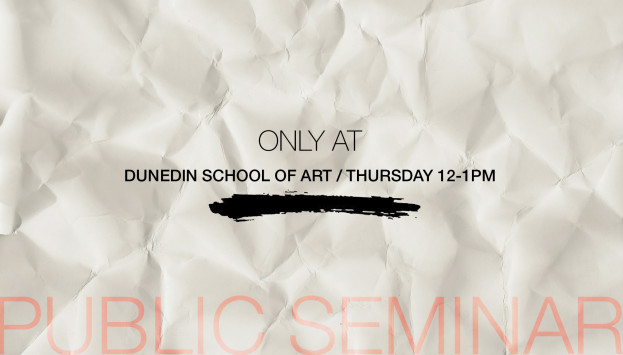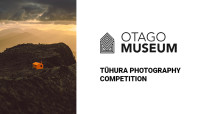THUR 21 MARCH, 12.00 – 1.00 PM, P152 LECTURE ROOM, DUNEDIN SCHOOL OF ART, RIEGO ST.
Areta Wilkinson + Mark Adams (a collaboration)
Repatriation
The situation of the artifact and Ng¯ai Tahu taonga from Te Waipounamu – The South Island, within museums in Aotearoa and abroad is foregrounded in the collaborative project of M¯aori artist Areta Wilkinson (Ng¯ai Tahu) and P¯akeh¯a artist Mark Adams. A residency at the Museum of Archaeology and Anthropology at Cambridge University, UK between 2009-17 allowed the artists to respond to those parts of collections with personal significance housed in English and German imperial museums. The pair produced unique silver bromide photograms of taonga and the tools and materials of their making. For Wilkinson, the project allowed a direct engagement with her whakapapa as a maker, and to produce new works from the absences in these photograms which directly reference the m¯atauranga M¯aori of her ancestors. For Adams, the project opened a way of engaging with the colonial relationships these artifacts and taonga are enmeshed in without messing with them. Repatriation return the shades of this cultural material and new manifestations of it to our eyes here.
Areta Wilkinson is an artist of Ng¯ai Tahu descent, a M¯aori tribal group of Te Waipounamu the South Island of New Zealand. Wilkinson has investigated the intersection of contemporary jewellery as a form of applied knowledge and practice with M¯aori philosophies, especially whakapapa (genealogies) and a worldview informed by Ng¯ai Tahu perspectives. These ideas are articulated in her 2014 PhD Creative Arts with Massey University. Wilkinson’s work is seen in New Zealand public collections and current artworks are exhibited in the 9th Asia Pacific Triennial of Contemporary Art (APT9) at Queensland Art Gallery Museum of Modern Art (QAGOMA). Areta is Nohoaka Toi Kai Tahu (Kai Tahu Artist in Residence) in 2019.
Mark Adams is one of New Zealand’s most distinguished photographic artists. He was born in Christchurch, and attended University of Canterbury School of Fine Arts from 1967 to 1970. He subsequently became well known for work concerned with cross-cultural interactions around Rotorua, Samoan tatau (tattooing) among the diaspora in New Zealand, the voyages of Captain Cook and other dimensions of colonial history in New Zealand, elsewhere in the Pacific, and in Europe. His work has been exhibited at biennales in Sao Paulo and Johannesburg, and otherwise in countries including Australia, Britain, Canada, the Netherlands and New Zealand.
Published on 18 Mar 2019
Orderdate: 18 Mar 2019
Expiry: 26 Mar 2019




